The Life of Chuck shows a man’s life in reverse and turns small moments into something meaningful. The film begins with the world falling apart and ends with a boy finding his way through grief and wonder. Chuck is not a celebrity or a hero. He is just a man who worked as an accountant and found joy in dancing.
He loved his family. He helped people. He chose to live purposefully even when he knew how it would all end. The movie follows his life backward to remind us that everything matters. Every choice. Every connection. Every smile. Tom Hiddleston plays Chuck with warmth and sincerity.
He feels like someone you could pass on the street. Director Mike Flanagan focuses on the small details that often go unnoticed. He shows Chuck dancing in the middle of a sidewalk.
He shows a boy stepping into a room that holds the future. The film is not loud. It is thoughtful and quiet. It takes its time. It wants you to notice the people around you. It wants you to remember the moments that shaped you. These are the ten scenes from The Life of Chuck that define Chuck’s life and remind us what it means to live.
10 Best Charles Krantz moments from The Life of Chuck
1. The Billboard Reveal in the Apocalypse (Act III)
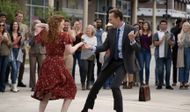
Billboards begin flashing Chuck’s name while the world around them falls apart. Planes fall from the sky. Power grids fail. People stare up at giant signs that say “39 GREAT YEARS THANKS CHUCK.”
This is the first time anyone has heard Chuck’s name. Nobody knows who he is. Yet the world treats his life like it matters to everything. This moment builds the mystery. It makes Chuck feel important before the audience even meets him. It turns a stranger into the emotional center of the story by making his life the reason the universe starts shutting down.
2. The Spontaneous Street Dance with Janice (Act II)
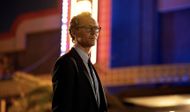
Chuck hears a street drummer outside a hotel. He stops walking. He starts dancing without thinking. Janice sees him and decides to join. The crowd watches them take over the sidewalk.
This moment shows what Chuck brings into the world. He gives people a reason to smile. The dancer gets better tips. Janice finds joy after heartbreak. The audience sees a man who lives with energy. The scene turns into a celebration of the ordinary. It tells us this is someone who doesn’t need much to create something memorable. He just needs a beat and a sidewalk.
3. Visiting the Cupola for the First Time (Act I)

Chuck walks upstairs after his grandfather’s funeral. He unlocks the cupola. The room has been off-limits for years. Inside, he sees his adult self dying in a hospital bed.
He does not cry. He does not panic. He just watches. Then he makes a quiet decision to forget it and live anyway. This moment explains everything that comes after. Chuck knows how his life will end. So he learns to appreciate what happens before that. The cupola is not about ghosts. It is about perspective. It becomes the reason he lives the way he does.
4. Dancing with His Grandmother in the Kitchen
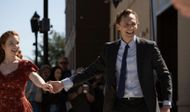
Chuck stands on his grandmother’s feet. They dance together in the kitchen. He is still small. His parents have died. His world has already fallen apart once.
This becomes his first experience of joy after loss. It tells us where his love for dance began. It connects movement to healing. The scene stays in his memory because it gave him something steady. His grandmother teaches him how to be free when everything else feels broken. That rhythm stays with him through every phase of life. It starts right here with soft music and bare feet.
5. The First Time Chuck Performs on Stage in School
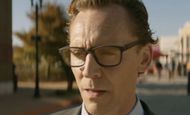
Chuck signs up for the dance club instead of the math club. He goes on stage in front of his classmates. His moves are rough. His nerves are obvious. But he finishes the routine.
This is the first time Chuck shows people who he really is. It is not about being perfect. It is about being brave. The performance plants the seed for every public dance he does later. He takes risks. He faces fear. The school stage becomes his first real test. It’s the moment where he chooses self-expression over safety. And that decision stays with him.
6. Talking to Cat in High School (Act I)
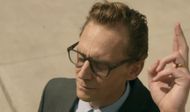
Chuck finds Cat sitting alone. She has lost someone close to her. He sits down beside her. He shares his own story without taking the spotlight.
He listens more than he speaks. He gives her the kind of silence that helps people feel heard. This shows how much emotional awareness Chuck had even as a teenager. The moment is small but important. He learns how to show up for someone without fixing anything. It’s not about advice. It’s about being there. That trait becomes part of every relationship he has later in life.
7. Working Late as an Accountant—and Loving It
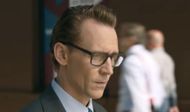
Chuck sits at his desk long after everyone else has gone. He studies numbers. He flips through files. His eyes are tired, but he looks satisfied.
He doesn’t hate his job. He doesn’t dream of quitting. He finds something real in the work. His grandfather once said that math can be beautiful. Chuck proves that by showing up every day and caring. He dances at night but balances books in the morning. That balance makes his life feel whole. The job grounds him. It gives him structure. It’s not just work. It’s another kind of rhythm.
8. Reuniting with His Wife and Son at His Deathbed
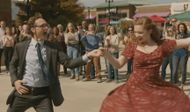
Chuck lies in a hospital bed. His world is ending. The lights outside are fading. His wife Ginny and son Brian walk into the room.
They sit beside him. They hold his hand. They do not speak much. The silence feels full. This moment makes everything we saw before feel heavier. The joy. The heartbreak. The quiet scenes all lead to this. Chuck’s life ends with love around him. Not with noise. Not with fear. The universe might be collapsing, but this hospital room feels calm. The goodbye is soft but final. It means everything.
9. Learning the Walt Whitman Quote in Class
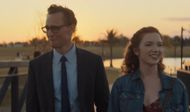
Miss Richards stands at the front of the class. She recites a line from Leaves of Grass. She says, “I contain multitudes.” Chuck hears it and writes it down.
He does not say anything. But the words stay with him. They shape how he sees life. The quote explains why Chuck can hold so many layers. He is not just a dancer. Not just an accountant. He is everything he has ever felt or loved. This is the line that becomes the spine of the film. It tells the audience what Chuck believes without him ever saying it.
10. Smiling Through the Collapse (Act III)
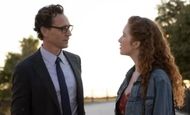
Chuck’s eyes are half-closed. His body is weak. His breath slows. The stars above begin to vanish one at a time.
And then he smiles. He knows the end is near. But he is not scared. That smile carries everything we have seen. The dancing. The losses. The joy. It is not about beating death. It is about meeting it with peace. The final shot does not need sound. It needs only that face. The smile is not about control. It is about acceptance. That look becomes the last message the film sends. It says this life was enough.
Follow for more updates.
Love movies? Try our Box Office Game and Movie Grid Game to test your film knowledge and have some fun!
